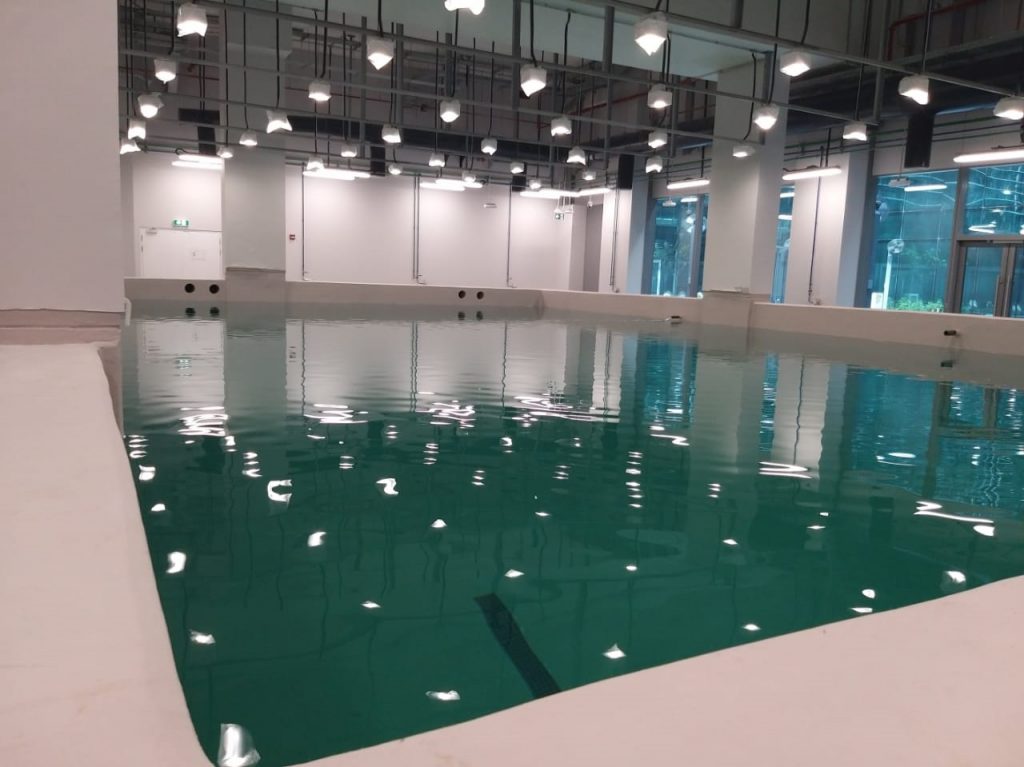Theme 3 Robotics for Industrial Automation (R4IA)
L01029 lab is dedicated for this theme.
- Robotics for Manufacturing of Large-Size Structures: A wheeled UGV (Husky), a serial manipulator, (URF5 Arm), a gripping mechanism, and an attached brick storage, are used for bricklaying tasks in construction processes. Mechanical system development focused on the sizing of the ground and aerial robots as well as the development of appropriate gripping systems to pick and place the bricks. For more efficiency in the brick collection, a storage platform was attached to the UGV. The autonomous navigation of both the ground and aerial robots is performed by fusing the onboard sensors’ data (Velodyne Lidar) including wheel odometry, visual odometry, IMU data, altitude data, and GPS data to localize the robots.
- Compliant Manipulator: Baxter robot with vision-based gripper system using event-based cameras utilizing the deformations of the test object to be grasped in obtaining important data to assist effective grasping.
- Novel smart biorobotic assistive exoskeletons for the rehabilitation of stroke patients and novel discrete variable stiffness actuators for safe Human-Robot Interaction (HRI). The novelty of the actuators lie in their design topology that allows stiffness level change independently from their position.
- Prokaryote’s flagella inspired Soft robot for underwater locomotion and manipulation.
Noteworthy equipment include Ultimaker and Lulzbot 3d-printers Mitsubishi Industrial Manipulator with 6 Dof and payload of 6kg, Nao Humanoid Robots
- Marine Robotics Facility with Wave tank system
Marine Robotics testing facility in D00058 allows testing under controlled environment that simulates the adverse environmental conditions of the sea. The facility is composed of approximately 10m x 15m pool in a 300m2 (x 8m height) lab space. To achieve this, we need an integrated wave tank system consisting of a wave generator and flow current generator and an overhanging (gantry-type) mechanism covering the whole pool width. This infrastructure will allow for extensive and controlled testing of marine robotic vehicles that could be used for testing underwater, surface and bio-robotic autonomous devices or remotely tele-operated devices.
